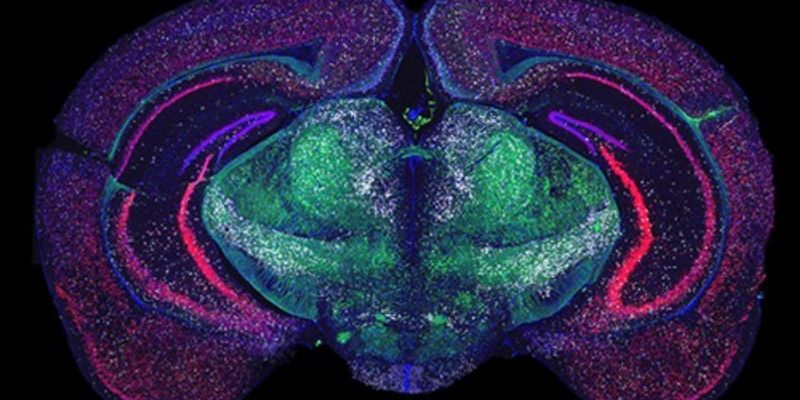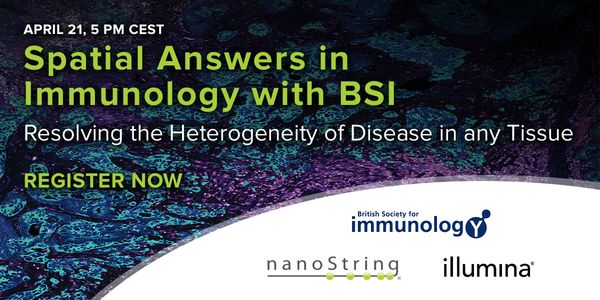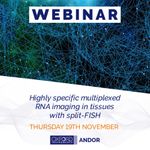Transcriptomics
Transcriptomics: is the study of the transcriptome-the complete set of RNA transcripts that are produced by the genome, under specific circumstances or in a specific cell-using high-throughput methods, such as microarray analysis.
-
RNA plays important and diverse roles in biology, but molecular tools to manipulate and measure RNA are limited. We demonstrate that RNA-targeting CRISPR effector Cas13 and novel RNA targeti...Speaker: Omar Abudayyeh, PhD , Jonathan Gootenberg, PhDPresented at: CRISPR Virtual Event Series 2021
Technological advances such as single-cell RNA sequencing accelerated our understanding of cellular diversity in tissues. However, the ability to elucidate this cellular heterogeneity while...
Speaker:
Jeroen Aerts, PhD
In this preliminary experiment, we used spatial transcriptomics to assess the gene expression profiles of microglia or astrocytes in relation to their distance from plaques. We compared 18-m...
Speaker:
Frances Edwards, PhD
Multiscale modeling has arisen as a focus of computational systems biology, with the realization that genome, proteome, connectome, etceteromes, will only become comprehensible once placed i...
JUL 15, 2021 | 9:00 AM
Date: July 15, 2021 Time: 9:00am (PDT), 12:00pm (EDT) The Pisces workflow robust, easy-to-use, end-to-end multi-omics solution for highly multiplexed targeted Spatial RNA analysis. VeranomeB...
JUN 24, 2021 | 8:00 AM
Date: June 24, 2021 Time: 8:00am (PDT), 11:00am (EDT) Cardiovascular disease is a leading health problem, affecting almost 30% of individuals in the developed world, and comprises a wide ran...
Nucleic acid amplification tests (NAAT) are a reliable, sensitive, and accurate diagnostic approach used in viral detection. The approach involves the isolation of nucleic acids from a sampl...
APR 22, 2021 | 5:00 PM
Date: April 22, 2021 Time: 8:00am (PDT), 11:00am (EDT), 5:00pm (CEST) System transcriptomics of the schizophrenia brain - Phillip Khaitovich Schizophrenia tops the psychiatric disorder l...
APR 21, 2021 | 5:00 PM
Date: April 21, 2021 Time: 8:00am (PDT), 11:00am (EDT), 5:00pm (CEST) Spatial Answers Trilogy - Spatial Answers in Immunology Immunology Researchers share their Spatial Discoveries in SARS-C...
Speaker:
Doug Brown, PhD
, Susanne Krasemann, MD, PhD
, Michelle Naughton, PhD
Sponsored By: NanoString Technologies,
Illumina
COVID-19 is a severe disease that has caused >1 million deaths in under one year. As this disease is novel, the molecular and cellular underpinnings of the progressive tissue injury are p...
Speaker:
Christopher Mason, Ph.D
Revolutionary sequencing technologies are enabling whole transcriptome profiling of tens to hundreds of thousands of single cells in parallel, in a single experiment. This has led to an expl...
Speaker:
Carina Emery
, Alina Steinbach
APR 20, 2021 | 5:00 PM
Date: April 20, 2021 Time: 8:00am (PDT), 11:00am (EDT), 5:00pm (CEST) Spatial Answers on Oncology - Professor Joan Seoane Prof. Joan Seoane, Group Leader and Director of the Translational Re...
Speaker:
Noel De Miranda
, Vasilis Stavrinides, MD
Sponsored By: NanoString Technologies,
Illumina
Learning Obejctives: 1. Understand the key requirements for sample preparation in a single cell and/or spatial transcriptomics experiment 2. Learn the synergies between a combined single cel...
























